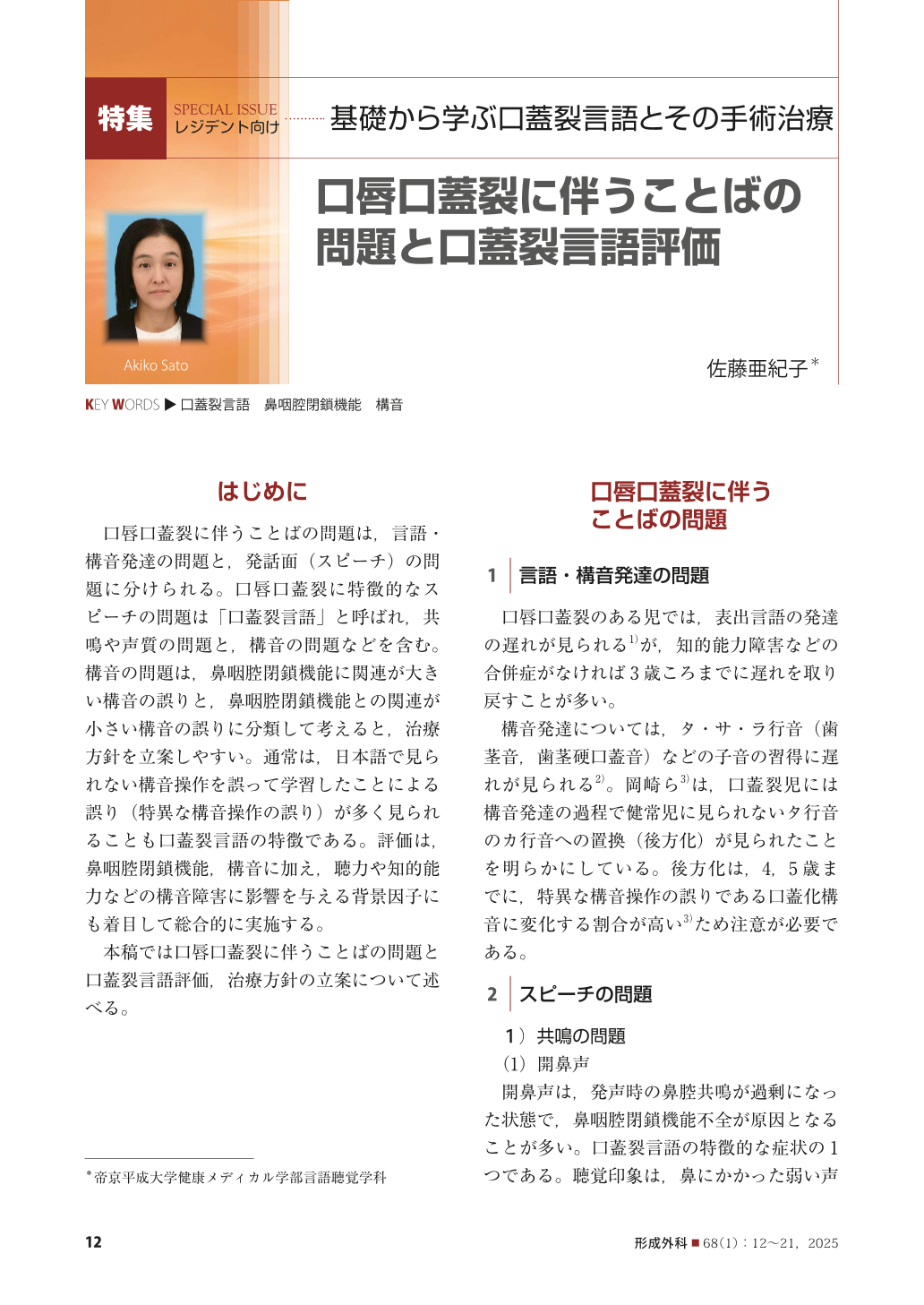Japanese
English
- 有料閲覧
- Abstract 文献概要
- 1ページ目 Look Inside
- 参考文献 Reference
はじめに
口唇口蓋裂に伴うことばの問題は,言語・構音発達の問題と,発話面(スピーチ)の問題に分けられる。口唇口蓋裂に特徴的なスピーチの問題は「口蓋裂言語」と呼ばれ,共鳴や声質の問題と,構音の問題などを含む。構音の問題は,鼻咽腔閉鎖機能に関連が大きい構音の誤りと,鼻咽腔閉鎖機能との関連が小さい構音の誤りに分類して考えると,治療方針を立案しやすい。通常は,日本語で見られない構音操作を誤って学習したことによる誤り(特異な構音操作の誤り)が多く見られることも口蓋裂言語の特徴である。評価は,鼻咽腔閉鎖機能,構音に加え,聴力や知的能力などの構音障害に影響を与える背景因子にも着目して総合的に実施する。
本稿では口唇口蓋裂に伴うことばの問題と口蓋裂言語評価,治療方針の立案について述べる。
Children with cleft lip and palate develop various speech problems including hypernasality, weak (nasal or nasalized) pressure-consonant, and misarticulation. Postoperatively, patients with cleft lip and palate are followed up for velopharyngeal closure function and articulation. The velopharyngeal closure function is assessed comprehensively using multiple examinations (including cephalometric radiography and endoscopy), emphasizing the perceptual assessment of hypernasality and weak, i.e., nasal or nasalized pressure consonants. Misarticulation is assessed together with the error type to determine whether the error is related to velopharyngeal insufficiency. In such cases, medical treatment for velopharyngeal insufficiency is prioritized. Regular speech and language assessments, developmentally appropriate advice, and speech management can prevent communication disorders and ensure effective speech acquisition. When treatment plans are being considered, it is important to (i) take into account the overall cleft lip and palate-treatment needs in accord with the patientʼs life stage and background (personal and environmental), as well as speech problems, and (ii) discuss best practices with the surgeon, dentist, speech therapist, and other team members.

Copyright© 2025 KOKUSEIDO CO., LTD. All Rights Reserved.


